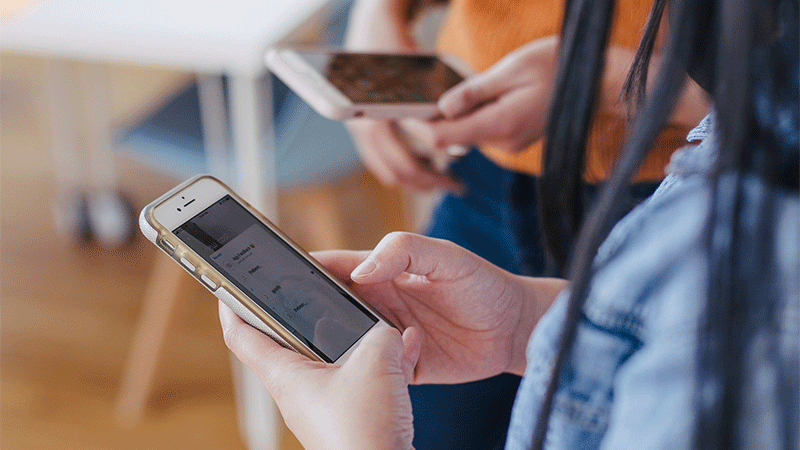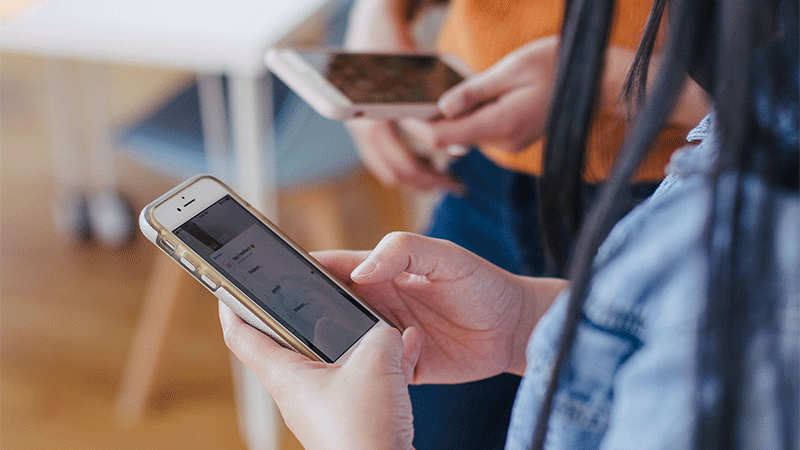
With the meteoric rise of mobile in today’s society, there has been an increase in how and when we act when it comes to our phones. Perhaps the most powerful of these actions is the “mobile moment.” According to Forrester, “a mobile moment is a point in time and space when someone pulls out a mobile device to get what they want in their immediate context.” Whether you subscribe to Forrester’s sentiment or not, it would take a brave person to deny that consumer expectations around mobile continue to increase dramatically. Today, it is largely assumed that any company attempting to thrive in the contemporary business landscape will have a mobile strategy. This assumption is leading consumers to develop higher standards by which they judge their interactions with a company. A mobile user's entire journey can happen in a matter of moments — sometimes in less than a minute. That’s the importance of the mobile moment.

Think about this scenario: You're making your morning cup of coffee, reading an article about the trend in automated homes and new IoT appliances. Curious, you search for the company mentioned, and soon enough you're requesting to receive more information and potentially upgrade. This mobile moment happened on a whim, and in a matter of seconds, went from introduction to potential sale. In fact, according to a recent Google study on micro-moments, 90% of smartphone users use their phone to make progress toward a long-term goal, or a multi-step process, in short bursts while "on-the-go." Mobile has hastened the customer journey and simultaneously broken it into many fleeting interactions. Marketers must be prepared to capture, respond and innovate in real time to ensure that touch-points are optimized from beginning to end.
Optimize for short, meaningful interactions
Seeing that today’s digital experiences are getting shorter and shorter, today's user interfaces must be purposefully designed for shorter interactions, rather than the long engagement you might expect in an app, for instance. The context for an interaction becomes very important and marketers must make hard trade-offs for content included in the moment, including text, images and the layout.
For example, a mobile-commerce interaction needs enough information for the customer to make a purchase decision, but not so much content that they feel overwhelmed or become distracted. Of course, your interface won't be perfect on the first try; it takes many iterations and rounds of testing to figure out the best layout for your experience. Marketers need to consider tools such as visual editors, heat maps, and engagement analytics to enable that process and to help introduce changes when necessary.
Don't neglect your offline moments
While it's imperative to optimize the mobile experience, don't forget that the entire customer journey includes several channels, both online and offline. A mobile lifecycle strategy considers that holistic picture and enables marketers to understand users based on activity online and offline, like browsing products, adding items to carts or walking by the appliance aisle.
This understanding can be used to send contextual and location-based notifications. For example, a brand can send a promotion to users near a preferred retailer’s storefront with a discount on an item they have previously browsed online along with a reminder that the location is just a few minutes away. Omni-channel strategy also means that consumer touch points outside the app don't fall through the cracks. It can ensure, for instance, that a cart abandonment reminder won't be sent to a mobile user who has already completed their purchase on the desktop website.
Mobile moments aren't always reactive
Beyond commerce-based notifications, algorithms can determine, based on real-time behavior, the perfect time to engage customers throughout the lifecycle. When marketers send personalized notifications during well-timed moments, they can boost engagement and create brand loyalty. They can, in effect, tap into a “mobile moment.”
For example, a brand can deliver a series of well-timed engaging messages starting immediately after a customer makes a purchase. During this time, the brand can send a setup video, tips and tricks, give them a reminder to write a review, and present well-timed product offers based on average use. Not only does this create an outstanding customer onboarding experience, it helps combat post-purchase dissonance and improves overall brand sentiment.
Mobile is more than a technology, it’s a behavior
Mobile technology isn’t going anywhere. As it continues to be an essential part of our lives, so does the behavior, actions and psychology that goes along with it. This mobile behavior is evolving quickly, and marketers need to be equipped to share and respond accordingly. A single person can experience hundreds of these mobile moments throughout a single day. Multiply those moments by millions of people and it's clear that marketers literally have billions of opportunities to seize these one-of-a-kind moments. The future of marketing lies in identifying these moments and connecting the dots between what customers desire and what a brand can deliver.

Enhancing the Ownership Experience with Mobile
As brands, it’s imperative to connect with customers where they are. Given the steadily increasing number of people using mobile devices around the...

Registria's Photoregister Wins the Direct Marketing Association's Innovation Award for Best Mobile Digital Marketing Platform
DENVER, CO--(Marketwired - Oct 5, 2015) - Photoregister, Registria's SaaS solution for mobile registration, was named the 2015 Direct Marketing...


